First of all, what is Cibus?
Pronounced 'chee-buhs,' this international food show exhibition held in Italy is a key event on Formaggio Kitchen's calendar. Typically, the full scale Cibus fair takes place every other year and can fill up to eight warehouses with producers from a variety of food industries. These include everything from meats to dairy to dry goods. This year, they hosted a smaller form of Cibus, filling only one warehouse, but that didn't deter us from a trip out to Parma, Italy. The Italian government and fair organizers invite buyers from all over the world to attend these shows, intending to develop business with Italian suppliers. Every year, we take advantage of this invitation to keep our relationships with Italian producers alive.
The show took place in the region of Emilia-Romagna, where three of the greatest Italian foods originate: Prosciutto di Parma, Parmigiano-Reggiano and Balsamico Tradizionale (Modena and Reggio-Emilia). On this trip, I coordinated with the Rogers Collection in Portland, Maine to visit Prosciuttificio Pio Tosini and Parmigiano-Reggiano producer Valserena.
You Say Prosciutto, I Say Prosciutto
There is an extensive history of preserving food with oil and salt, so the specific origin of cured pork legs is difficult to nail down. Various specific styles of curing have made their way into the food culture of Italy. Commonly known as Prosciutto, the cured hind leg of the pig is technically Prosciutto crudo - as opposed to the cooked deli ham, prosciutto cotto.
The best known of the cured pork leg is Prosciutto di Parma DOP, followed by Prosciutto San Daniele DOP and then Prosciutto di Modena DOP, Prosciutto Toscano DOP, Prosciutto Veneto Berico-Euganeo DOP and Prosciutto di Carpegna DOP. There are also IGP designations for Prosciutto di Norcia, Prosciutto di Sauris and Crudo di Cuneo. While I was in Parma, I was told various stories about the origins of this famed meat including that it all started in Norcia (told to me by a Norcian).
Visiting Prosciuttificio Pio Tosini
Pio Tosini Prosciutto has been an important part of our deli offering for more than a decade. The production methods, their down to earth personality as well as their focus on tradition and exceptional quality has helped build a strong allegiance amongst our mongers and our customers. Mary Murphy (former monger) wrote a previous post about Pio Tosini, which you can read here. I don't have too much to add with the exception of the confirming both their continued focus on quality and the generous hospitality of the owner, Giovanni.
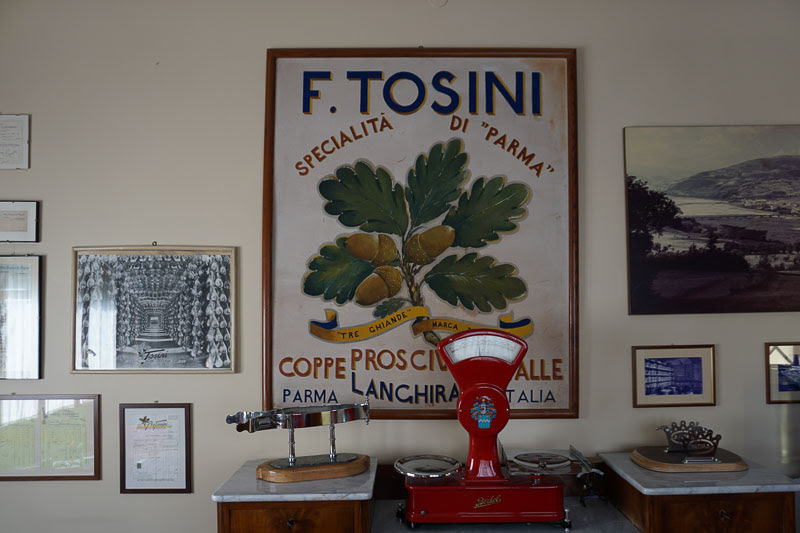
The offices of Pio Tosini.
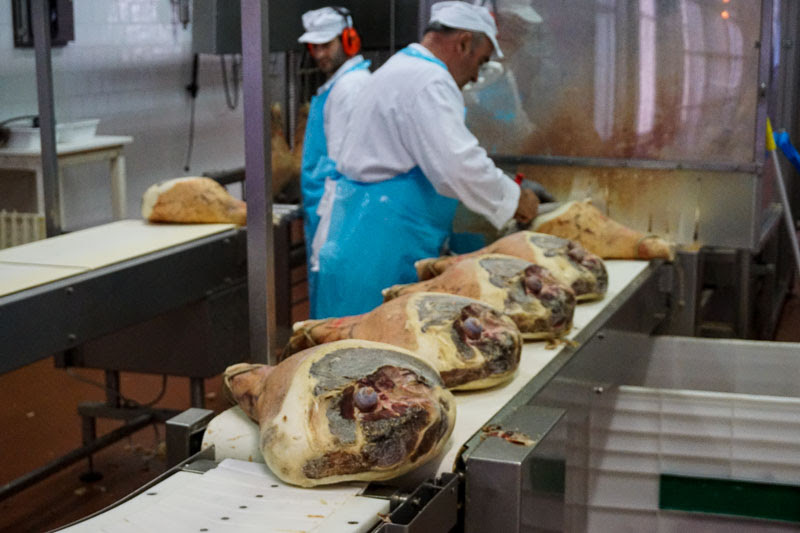
Young legs of Prosciutto di Parma being hand-trimmed before aging
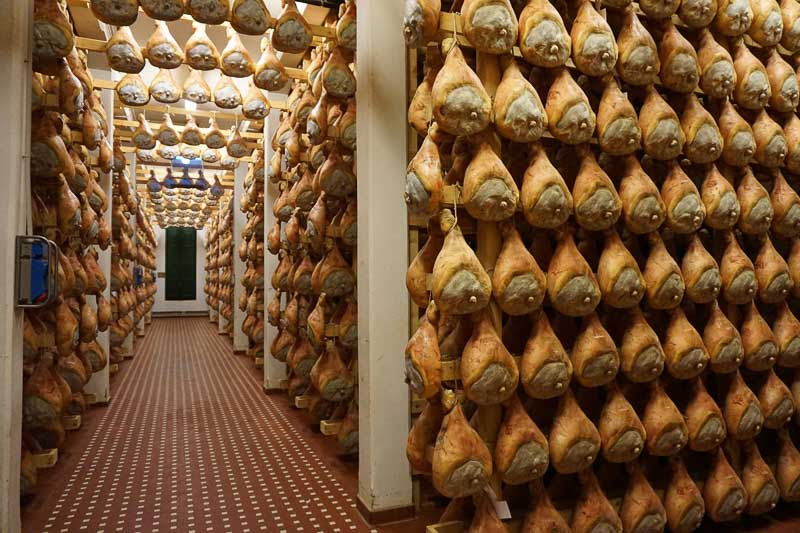
The main aging hall of Pio Tosini in Langhirano
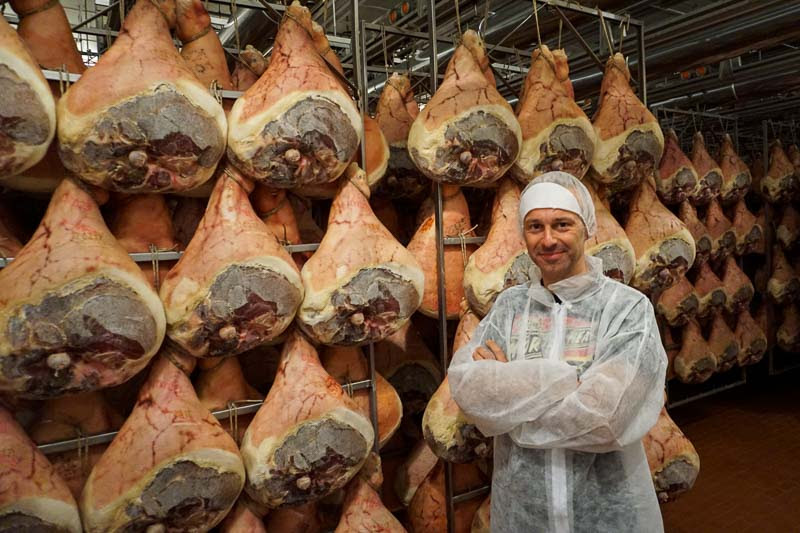
Giovanni Bianchi of Pio Tosini
 Employees rubbing lard and rice flour mixture over the exposed face of each leg
Employees rubbing lard and rice flour mixture over the exposed face of each leg
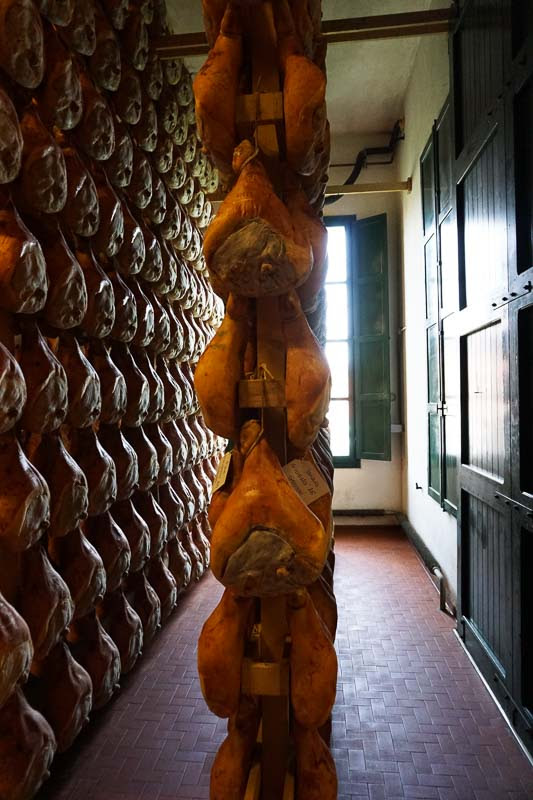
In this aging hall, they open and close windows (all or some) to allow the winds off of the Apennines to pass through the room and gently dry the hams.
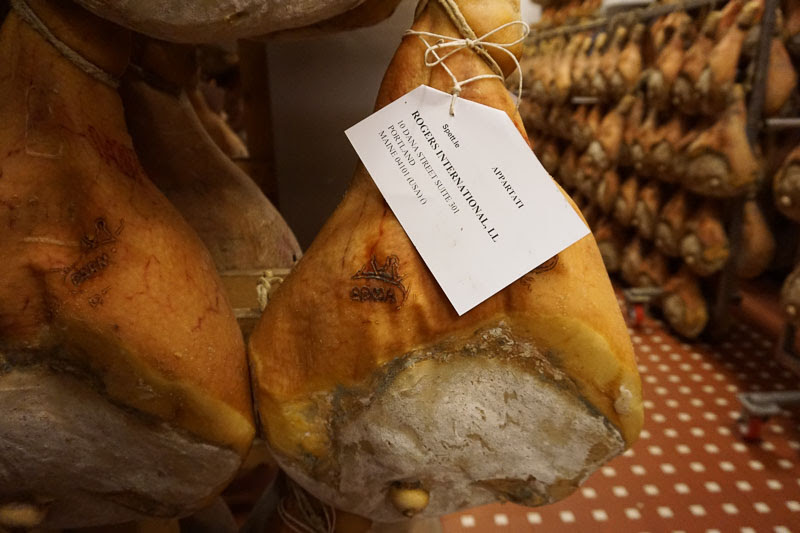
This was a selection of hams reserved for the Rogers Collection.

